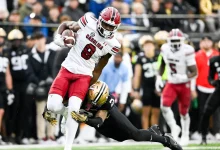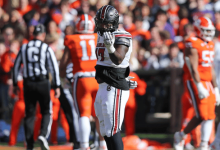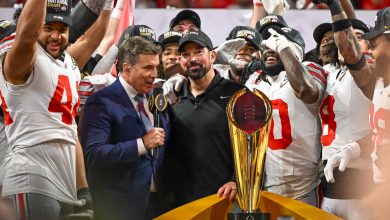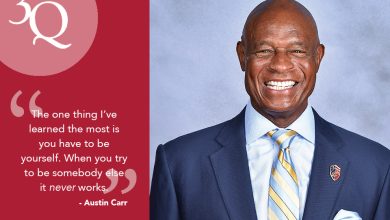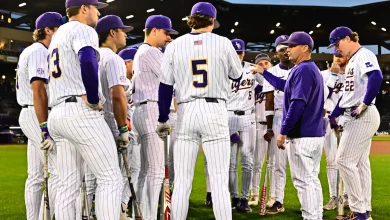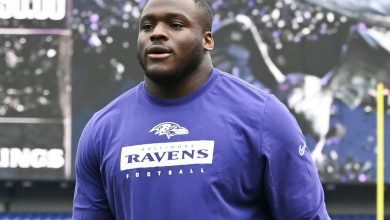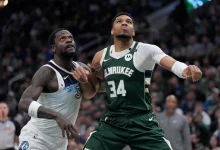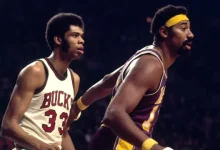Ohio State’s Missed Opportunity: The Quinn Ewers Saga and Its Financial Implications
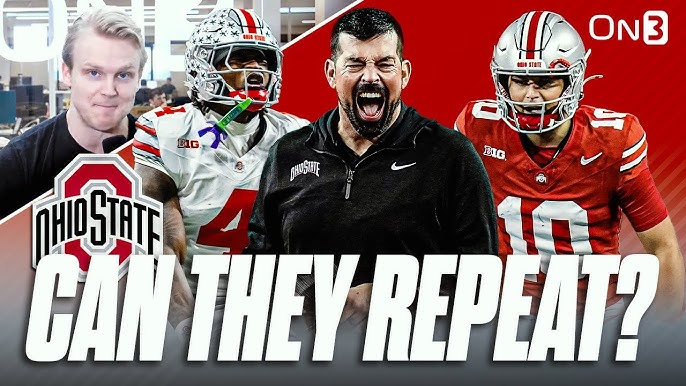
In the ever-evolving landscape of college football, few stories have been as compelling as that of Quinn Ewers. A prodigious talent whose journey from high school phenom to NFL prospect has been marked by significant decisions, both on and off the field. One of the most intriguing aspects of Ewers’ career has been his relationship with Ohio State University, a connection that, had circumstances been different, could have seen him return to the Buckeyes for the 2025 season.
The Early Days: A Star in the Making
Quinn Ewers’ rise to prominence began in Southlake, Texas, where he was a standout quarterback at Carroll High School. His exceptional arm strength and playmaking ability quickly garnered national attention, earning him the title of the nation’s top quarterback recruit. In a bold move that defied traditional high school norms, Ewers reclassified to the 2021 recruiting class, allowing him to enroll early at Ohio State University. This decision was not just about advancing his football career; it was also a strategic move to capitalize on the newly introduced Name, Image, and Likeness (NIL) opportunities.
Upon his arrival at Ohio State, Ewers wasted no time in securing endorsement deals. He signed a multi-year agreement with Houston-based GT Sports Marketing worth over $1 million, marking one of the first significant NIL deals for a college athlete. Additionally, he partnered with Holy Kombucha, a Texas-based beverage company, and received a Ford F-250 Tremor truck from a Columbus dealership. These ventures not only bolstered his financial standing but also set a precedent for future college athletes seeking to profit from their personal brand.
The Transfer to Texas: A New Chapter
Despite the promising start at Ohio State, Ewers found himself in a highly competitive quarterback room, which ultimately led to his decision to transfer to the University of Texas. At Texas, Ewers became the starting quarterback, leading the Longhorns to multiple College Football Playoff appearances and showcasing his talents on a national stage. Over the course of three seasons, he accumulated impressive statistics, including over 10,000 passing yards and 63 touchdowns.
However, Ewers’ time at Texas was not without its challenges. He faced criticism for inconsistent performances in key games, such as the 2023 Sugar Bowl and the 2024 Cotton Bowl. Despite leading Texas to a semifinal appearance in the College Football Playoff, the Longhorns fell short against Ohio State, with Ewers’ late-game fumble sealing the defeat. This turnover raised questions about his ability to perform under pressure, a concern that would follow him into the NFL Draft evaluations.
The NIL Landscape: A Missed Financial Opportunity
As Ewers approached the end of his college career, the financial landscape of college athletics had undergone a significant transformation. NIL deals had become a central component of college football, with top-tier players securing lucrative contracts. Ewers, having already established himself as a marketable athlete, was in a prime position to capitalize on these opportunities.
Reports surfaced indicating that Ewers had been offered substantial NIL deals to transfer to other programs. One such offer reportedly exceeded $8 million, a sum that far surpassed the earnings of many professional athletes. Despite these enticing offers, Ewers chose to enter the NFL Draft, a decision that raised eyebrows given the potential financial windfall he was turning down.
At the time of his departure, Ewers had already earned approximately $6 million in NIL compensation during his tenure at Texas, in addition to the $1.4 million from his earlier endorsement deal. By opting for the NFL Draft, Ewers potentially forfeited an additional $8 million in NIL earnings, a substantial amount that underscores the evolving dynamics of college athletics and the increasing financial stakes for student-athletes.
The NFL Draft: A New Beginning
Quinn Ewers declared for the 2025 NFL Draft, where he was selected in the seventh round by the Miami Dolphins. While the selection marked a significant achievement, it also highlighted the unpredictable nature of the NFL Draft process. Ewers’ draft position was influenced by various factors, including his college performance, potential for development, and the depth of talent in the quarterback class.
Despite being drafted, Ewers faces an uphill battle to secure a starting role in the NFL. Scouts have expressed concerns about his deep-ball accuracy, pocket awareness, and mobility. These critiques suggest that while Ewers possesses raw talent, significant development is needed to translate his college success into professional achievement.
The Financial Perspective: A Costly Decision
From a financial standpoint, Ewers’ decision to enter the NFL Draft rather than capitalize on additional NIL opportunities in college represents a significant trade-off. The $8 million NIL offer he reportedly turned down could have provided him with financial security and additional resources to invest in his development as a professional athlete. In contrast, the rookie contract he signed with the Dolphins is valued at approximately $13 million over four years, a figure that, while substantial, pales in comparison to the potential earnings he could have amassed through NIL deals.
This scenario underscores the complexities faced by college athletes navigating the intersection of education, athletics, and financial opportunities. The evolving NIL landscape has introduced new avenues for income, but also new challenges in decision-making, as athletes weigh immediate financial gains against long-term career prospects.
A Tale of Opportunity and Choice
Quinn Ewers’ journey from high school sensation to NFL prospect is a testament to his talent and determination. However, it also serves as a case study in the evolving dynamics of college athletics and the financial considerations that now play a pivotal role in athletes’ decisions. Had circumstances been different, Ewers could have returned to Ohio State for the 2025 season, potentially leading the Buckeyes to new heights and capitalizing on additional NIL opportunities. Instead, he chose the path to the NFL,

